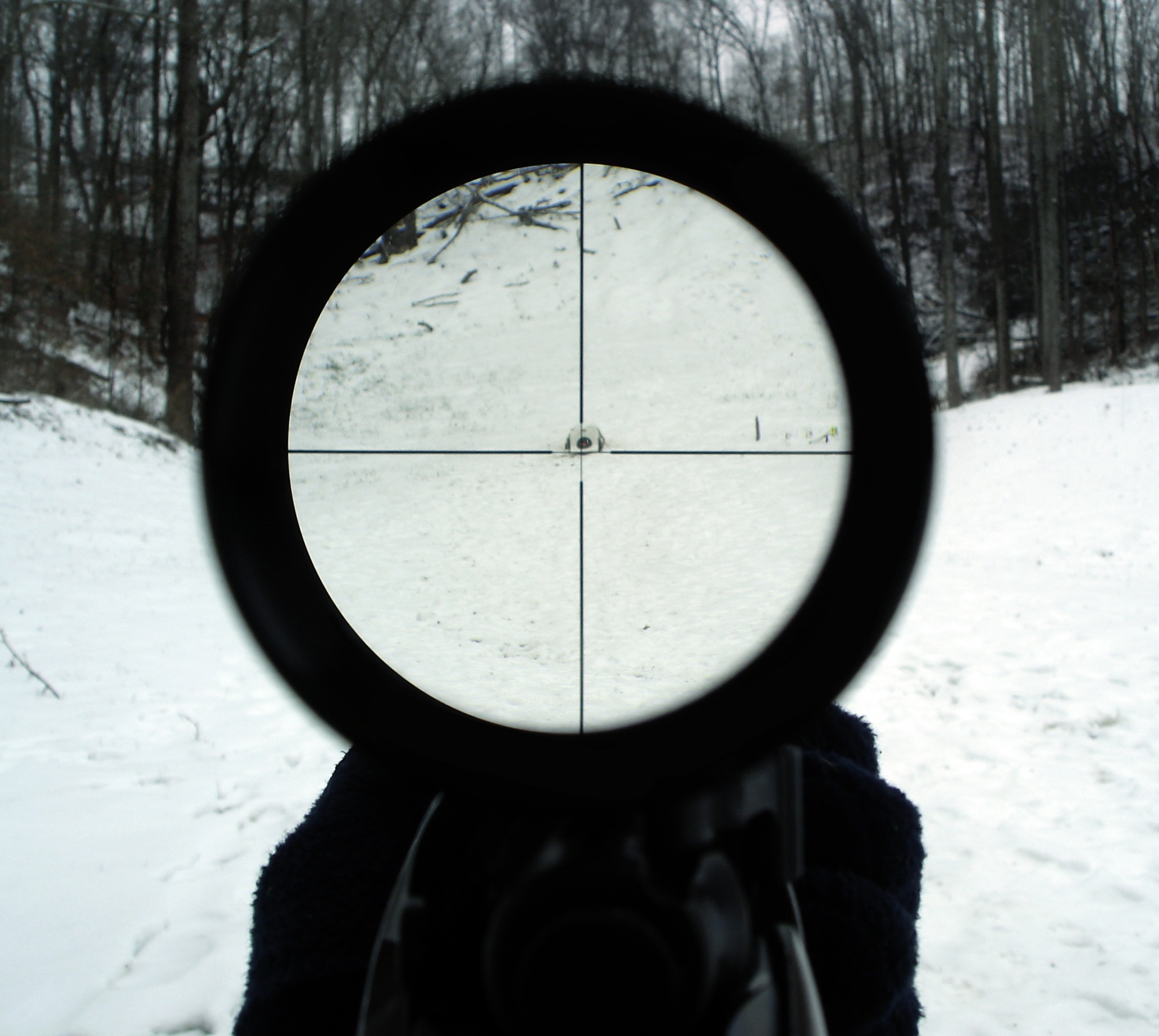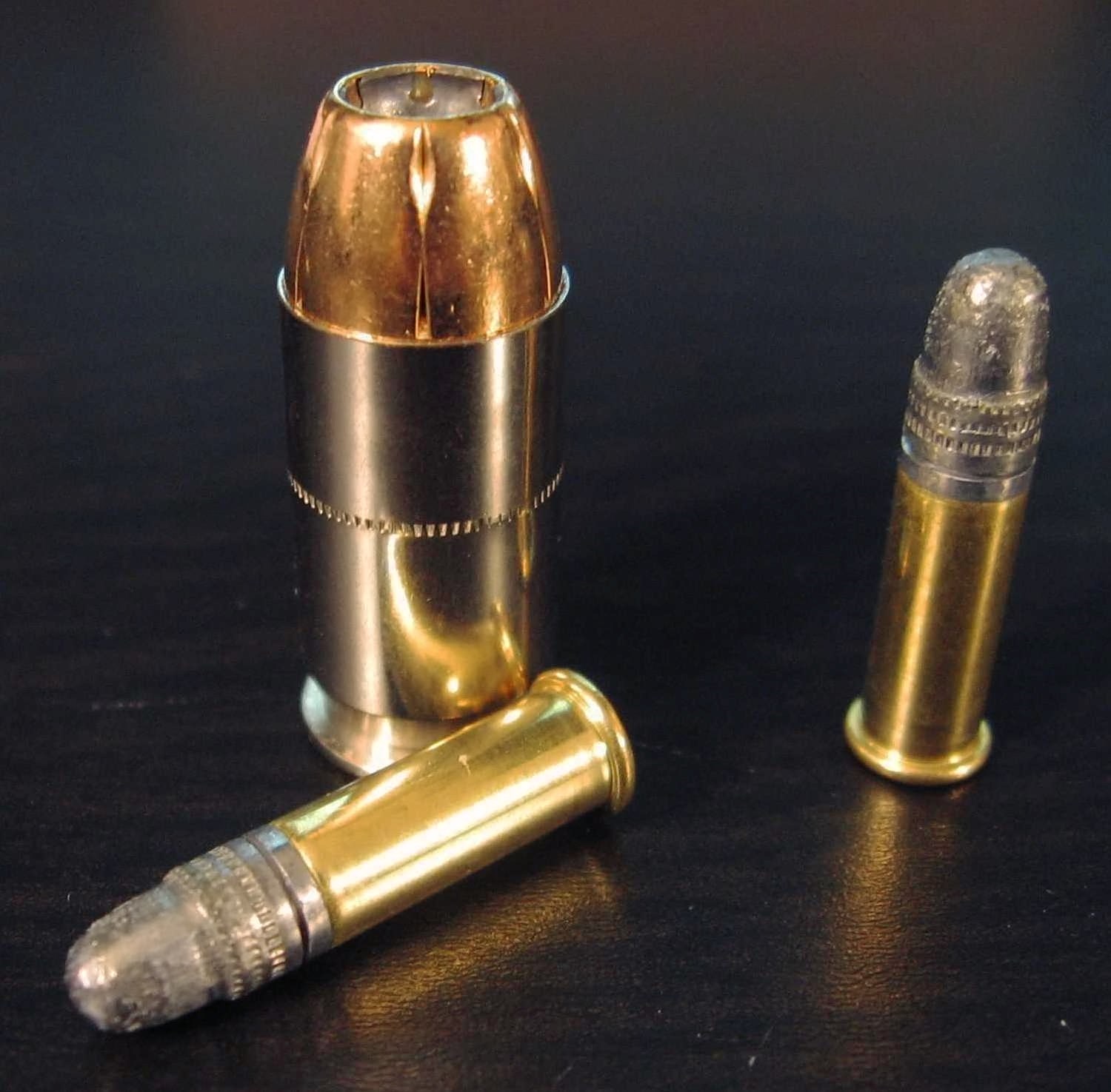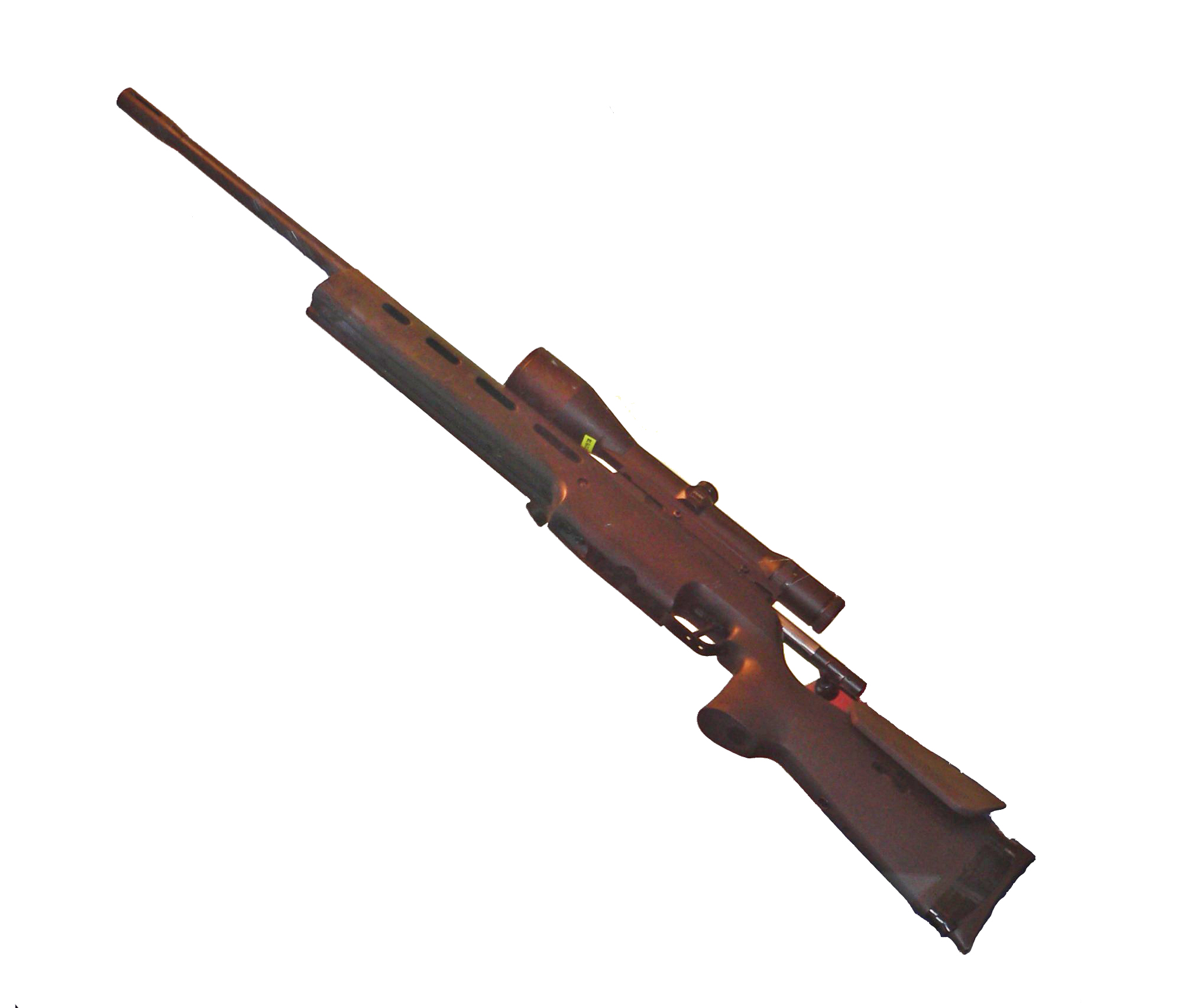|
Steyr Scout
The Steyr Scout () is an Austrian bolt-action rifle manufactured by Steyr Mannlicher, and chambered primarily for 7.62 NATO ( .308 Winchester), although other caliber options in 5.56×45mm NATO ( .223 Remington), .243 Winchester, 6.5 Creedmoor, .376 Steyr and 7mm-08 Remington are also offered commercially. It is intended to fill the role of a versatile, lightweight all-around rifle as specified in Jeff Cooper's scout rifle concept. Apart from the barrel and action, the gun is made primarily of polymers and is designed to be accurate to at least . Design The Steyr Scout has the following features: * Removable box magazines with a magazine cut-off, individual rounds can be manually loaded through the ejection port, allowing for the magazine to be kept in reserve. * Second spare magazine stored in the butt of the rifle. * Light weight due to aluminium receiver housing, hammer forged fluted barrel, and extensive use of polymers. * Top integral Weaver rail. * Bottom UIT rai ... [...More Info...] [...Related Items...] OR: [Wikipedia] [Google] [Baidu] |
Telescopic Sight
A telescopic sight, commonly called a scope informally, is an optical sighting device based on a refracting telescope. It is equipped with some form of a referencing pattern – known as a ''reticle'' – mounted in a focally appropriate position in its optical system to provide an accurate point of aim. Telescopic sights are used with all types of systems that require magnification in addition to reliable visual aiming, as opposed to non-magnifying iron sights, reflector (reflex) sights, holographic sights or laser sights, and are most commonly found on long-barrel firearms, particularly rifles, usually via a scope mount. Similar devices are also found on other platforms such as artillery, tanks and even aircraft. The optical components may be combined with optoelectronics to add night vision or smart device features. History The first experiments directed to give shooters optical aiming aids go back to the early 17th century. For centuries, different optical ... [...More Info...] [...Related Items...] OR: [Wikipedia] [Google] [Baidu] |
Caliber
In guns, particularly firearms, but not #As a measurement of length, artillery, where a different definition may apply, caliber (or calibre; sometimes abbreviated as "cal") is the specified nominal internal diameter of the gun barrel Gauge (firearms), bore – regardless of how or where the bore is measured and whether the finished bore matches that specification. It is measured in inches or in millimetres, millimeters]ref name=barnes2016-p9> In the United States it is expressed in hundredths of an inch; in the United Kingdom in thousandths; and elsewhere in millimeters. For example, a US "45 caliber" firearm has a barrel diameter of roughly 0.45 inches (11.43mm). Barrel diameters can also be expressed using metric dimensions. For example, a "9 mm pistol" has a barrel diameter of about 9 millimeters. Since metric and US customary units do not convert evenly at this scale, metric conversions of caliber measured in decimal inches are typically approximations of the precise spe ... [...More Info...] [...Related Items...] OR: [Wikipedia] [Google] [Baidu] |
Cocking Handle
The cocking handle, also known as charging handle or bolt handle, is a device on a firearm which, when manipulated, results in the bolt (firearms), bolt being pulled to the rear, putting the hammer (firearms), hammer/firing pin, striker into a spring (device), spring-loaded ("cocked") "ready and set" position, allowing the operator to open the breech and eject any spent/unwanted cartridge (firearms), cartridge/shotgun shell, shell from the chamber (firearms), chamber, and then load a new round from the magazine (firearms), magazine or ammunition belt, belt if required. By opening the breech, it also helps the operator to verify that the weapon's chamber is clear of any rounds or other obstructions; to clear a firearm malfunction, stoppage such as a jam, double-feed, stovepipe or misfire; to facilitate moving the bolt back into battery, acting as a forward assist (but not necessarily); and to release a bolt locked to the rear by a catching mechanism on a firearm equipped with a "la ... [...More Info...] [...Related Items...] OR: [Wikipedia] [Google] [Baidu] |
Safety (firearms)
file:M16A2 Safety Closeup.jpg, Close-up shot of a safety of an M16 rifle, M16A2 rifle In firearms, a safety or safety catch is a mechanism used to help prevent the accidental discharge of a firearm, helping to ensure safer handling. Safeties generally can be divided into subtypes such as internal safeties (which typically do not receive input from the user) and external safeties (which typically allow the user to give input, for example, toggling a lever from "safe" to "fire" or something similar). Sometimes these are called "passive" and "active" safeties (or "automatic" and "manual"), respectively. External safeties typical work by prevent the trigger pull or prevent the firing pin from detonating the cartridge or both. Firearms with the ability to allow the user to Selective fire, select various fire modes may have separate switches for safety and for mode selection (e.g. Thompson submachine gun) or may have the safety integrated with the mode selector as a fire selector w ... [...More Info...] [...Related Items...] OR: [Wikipedia] [Google] [Baidu] |
Tang (tools)
A tang or shank is the back portion of the blade component of a tool where it extends into stock material or connects to a handle – as on a knife, sword A sword is an edged and bladed weapons, edged, bladed weapon intended for manual cutting or thrusting. Its blade, longer than a knife or dagger, is attached to a hilt and can be straight or curved. A thrusting sword tends to have a straighter ..., spear, arrowhead, chisel, file, coulter, pike, scythe, screwdriver, etc. One can classify various tang designs by their appearance, by the manner in which they attach to a handle, and by their length in relation to the handle. ''Nakago'' is the term in Japanese, used especially when referring to the tang of the katana or the wakizashi. Full vs partial tang A full tang extends the full length of the grip-portion of a handle, versus a ''partial'' tang which does not. A full tang may or may not be as wide as the handle itself, but will still run the full length of ... [...More Info...] [...Related Items...] OR: [Wikipedia] [Google] [Baidu] |
UIT Rail
The UIT rail, also known as Anschutz rail, is a standard used for mounting slings and other gun accessories in competition shooting, and is essentially a T-slot track shaped aluminium extrusion profile accepting attachments in the form of T-slot nuts, or similar. A similar design is called Freeland rail, but the dimensions of Anschütz (UIT) and Freeland rails differ. The Anschütz rail is wide and shallow, and the Freeland is narrower and deeper. Accessories made for one of the two types are not necessarily compatible with the other. Dimensions Dimensions below are approximate. Equipment rails - Anschutz-UIT left, Freeland right.png, Drawing comparing Anschütz (left) and Freeland equipment rails (right). See also * Rail Integration System, generic term for a system for attaching accessories to small firearms * Weaver rail mount, early system used for scope mounts, still has some popularity in the civilian market * Sling swivel, older standard used for mounting sl ... [...More Info...] [...Related Items...] OR: [Wikipedia] [Google] [Baidu] |
Weaver Rail
A Weaver rail mount is a system to connect telescopic sights (often via a scope mount) and other accessories to firearms and certain crossbows. It uses a pair of parallel rails and several slots perpendicular to these rails. The later Picatinny rail, developed by the US military, is a development of the key concepts of the Weaver system, and they are partially compatible. History The Weaver mount was developed by William Ralph Weaver (1905 – 8 November 1975) at his telescopic sight company W.R. Weaver Co., which he founded in 1930. Previous systems included the Leupold/Redfield mounts. Compared to the Leupold mount, the Weaver rail is not as strong and cannot be adjusted for windage. W.R. Weaver Co. became Weaver Optics, and was a subsidiary of Meade Instruments Corporation from 2002 to 2008, when it was on-sold to become part of Alliant Techsystems's Security and Sporting division in Onalaska, Wisconsin. Features Older Weaver systems used two pieces mounted a distanc ... [...More Info...] [...Related Items...] OR: [Wikipedia] [Google] [Baidu] |
Receiver (firearms)
In firearms terminology and law, the firearm frame or receiver is the part of a firearm which integrates other components by providing housing (engineering), housing for internal action (firearms), action components such as the hammer (firearms), hammer, bolt (firearms), bolt or breechblock, firing pin and extractor (firearms), extractor, and has screw thread, threaded interfaces for externally attaching ("receiving") components such as the gun barrel, barrel, stock (firearms), stock, trigger (firearms), trigger mechanism and iron sights, iron/sight (device)#Optical sights, optical sights. Some firearm designs, such as the AR-15 platform, feature receivers that have 2 separate sub-assemblies called the upper receiver which houses the barrel/trunnion, bolt components etc and the lower receiver (Trigger Mechanism Housing in some cases) that holds the fire control group, pistol grip, selector, stock etc. The receiver is often made of forged, machined, or stamped steel or aluminium. Ap ... [...More Info...] [...Related Items...] OR: [Wikipedia] [Google] [Baidu] |
Magazine (firearms)
A magazine, often simply called a mag, is an ammunition storage and feeding device for a repeating firearm, either integral within the gun (internal/fixed magazine) or externally attached (detachable magazine). The magazine functions by holding several cartridge (firearms), cartridges within itself and sequentially pushing each one into a position where it may be readily loaded into the gun barrel, barrel chamber (firearms), chamber by the firearm's moving action (firearms), action. The detachable magazine is sometimes colloquially referred to as a "clip (ammunition), clip", although this is technically inaccurate since a clip is actually an accessory device used to help load ammunition into a magazine or cylinder. Magazines come in many shapes and sizes, from integral tubular magazines on lever-action and pump-action rifles and shotguns, that may hold more than five rounds, to detachable box magazines and drum magazines for automatic rifles and light machine guns, that may h ... [...More Info...] [...Related Items...] OR: [Wikipedia] [Google] [Baidu] |
Polymer
A polymer () is a chemical substance, substance or material that consists of very large molecules, or macromolecules, that are constituted by many repeat unit, repeating subunits derived from one or more species of monomers. Due to their broad spectrum of properties, both synthetic and natural polymers play essential and ubiquitous roles in everyday life. Polymers range from familiar synthetic plastics such as polystyrene to natural biopolymers such as DNA and proteins that are fundamental to biological structure and function. Polymers, both natural and synthetic, are created via polymerization of many small molecules, known as monomers. Their consequently large molecular mass, relative to small molecule compound (chemistry), compounds, produces unique physical property, physical properties including toughness, high rubber elasticity, elasticity, viscoelasticity, and a tendency to form Amorphous solid, amorphous and crystallization of polymers, semicrystalline structures rath ... [...More Info...] [...Related Items...] OR: [Wikipedia] [Google] [Baidu] |
Action (firearms)
In firearms terminology, an action is the functional mechanism of a breechloading firearm that handles (loads, locks, fires, extracts, and ejects) the ammunition cartridges, or the method by which that mechanism works. Actions are technically not present on muzzleloaders, as all those are single-shot firearms with a closed off breech with the powder and projectile manually loaded from the muzzle. Instead, the muzzleloader ignition mechanism is referred to as the ''lock'' (e.g. matchlock, wheellock, flintlock, and caplock). Actions can be categorized in several ways, including single action versus double action, break action versus lever-action, pump-action, bolt-action, among many other types. The term action can also include short, long, and magnum if it is in reference to the length of the rifle's receiver and the length of the bolt. The short action rifle usually can accommodate a cartridge length of or smaller. The long action rifle can accommodate a cartridge of , ... [...More Info...] [...Related Items...] OR: [Wikipedia] [Google] [Baidu] |








